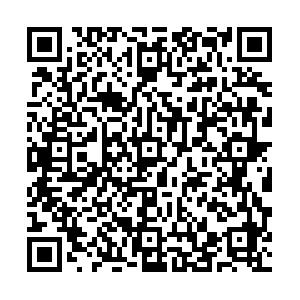Positive Effects of Programmed Nursing on Dry Eyes after the Phacoemulsification
-
摘要:
目的 评价程序护理干预对白内障超声乳化术后干眼的影响。 方法 选取昆明医科大学附属第二医院2022年1月至2024年1月收治的白内障超声乳化术患者100例,根据护理差异随机分为对照组和观察组各50例。对照组予以常规护理,观察组予以程序护理。比较两组患者术后干眼、护理满意度及干眼相关并发症的发生率。 结果 两组角膜荧光染色、泪液分泌试验和泪膜破裂时间:观察组分别为(1.46±1.13)点、(17.18±1.45)mm、(6.86±0.92) s都优于对照组的(2.96±0.09)点、(11.04±2.79) mm、(5.98±1.26) s(均P < 0.05);两组术后45 d、术后90 d干眼并发症发生率:观察组为8.0%及6.0%低于对照组的18.0%及16.0%(均P < 0.05);两组护理满意度:观察组为98.0%高于对照组的84.0%(P < 0.05),各组差异具有统计学意义。 结论 予以白内障超声乳化术患者程序护理,可以降低干眼的发生率,改善患者的眼部状况,提高患者的满意度。 Abstract:Objective To evaluate the effect of programmed nursing on dry eye after the phacoemulsification for cataract. Methods A total of 100 cases undergoing the phacoemulsification for cataract in our hospital from January 2022 to January 2024 were divided randomly into the control group and the observation group based on nursing differences with 50 cases in each group. The control group received the routine nursing, while the observation group was given the programmed nursing. The incidence of postoperative dry eye, nursing satisfaction, and dry eye-related complications were compared between the two groups. Results The results showed that the corneal fluorescence staining, tear secretion test, and tear film rupture time in the observation group were (1.46 ± 1.13) points, (17.18 ± 1.45) mm, and (6.86 ± 0.92) s, respectively, which were superior to the control group’ s (2.96 ± 0.09) points, (11.04 ± 2.79) mm, and (5.98 ± 1.26) s (all P < 0.05); The incidence of dry eye complications in the observation group at 45 days and 90 days after the surgery was 8.0% and 6.0%, respectively, lower than that in the control group at 18.0% and 16.0% (both P < 0.05); The satisfaction rate of the observation group with nursing care was 98.0%, which was higher than the control group’ s 84.0% (P < 0.05). The differences between the groups were statistically significant. Conclusion Programmed nursing for patients undergoing the phacoemulsification for cataract can reduce the incidence of dry eye, improve the eye condition of patients and increase the patient satisfaction. -
Key words:
- Programmed nursing /
- Cataract /
- Phacoemulsification /
- Dry eye
-
表 1 护理满意度调查问卷
Table 1. Nursing satisfaction survey questionnaire
分类 编号 问题内容 选项 基本信息 1 您的性别: (1)男;(2)女 2 您的年龄: (1)30~40 岁;(2)40~50 岁;
(3)50~60 岁;(4)60岁以上3 您的居住地: (1)城市;(2)农村 4 您的文化程度: (1)小学及以下;(2)初中;
(3)高中/中专;(4)大专及以上白内障手术及
干眼症状况5 您是否患有白内障并已接受手术治疗? (1)是;(2)否(若选择否,请跳至第12题) 6 您的白内障手术是在何时进行的? ________________________(请填写具体日期) 7 您接受的白内障手术方式是: (1)传统手术;(2)超声乳化手术;
(3)其他(请说明)_________8 术后,您是否出现过干眼症状? (1)是;(2)否(若选择否,请跳至第11题) 9 您出现的干眼症状主要包括(可多选): (1)眼部干涩;(2)异物感;(3)烧灼感或针刺感;
(4)眼痒;(5)流泪;(6)眼红;(7)视物模糊;(8)畏光;
(9)视力波动;(10)眼部胀痛或视疲劳;
(11)其他(请说明)______________________10 您认为干眼症状对您的日常生活
和工作有多大影响?(1)非常大;(2)较大;(3)一般;
(4)较小;(5)没有影响程序护理体验
及满意度11 您在术后是否接受过针对
干眼症的康复治疗或护理?(1)是;(2)否 12 您对术后干眼护理的程序护理了解多少? (1)非常了解;(2)比较了解;(3)一般了解;
(4)不太了解;(5)完全不了解13 在接受程序护理过程中,您是否
遇到过以下问题(可多选)?(1)护理流程不清晰;(2)护理人员态度不佳;
(3)护理效果不明显;(4)护理操作不当导致不适;
(5)其他(请说明)______________对干眼护理的
建议14 您对程序护理在白内障术后干眼
护理中的整体满意度如何?(1)非常满意;(2)比较满意;(3)一般;
(4)不太满意;(5)非常不满意15 您认为在白内障术后干眼护理中,
哪些方面需要改进或加强(可多选)?(1)护理流程优化;(2)护理人员培训;
(3)护理设备更新;(4)患者教育及指导;
(5)其他(请说明)________________________16 您对白内障术后干眼护理有
哪些具体的建议或意见?________________________ 其他 17 您是否愿意参加白内障术后
干眼护理相关的健康教育活动?(1)愿意;(2)不愿意 18 您认为以下哪些因素对白内障术后
干眼症状的缓解有重要影响(可多选)?(1)治疗方法;(2)护理人员水平;(3)护理设备;
(4)患者自身因素(如生活习惯、
用眼卫生等);(5)其他(请说明)______________表 2 两组护理满意度对比[n(%)]
Table 2. Comparison of nursing satisfaction between the two groups [n(%)]
组别 n 非常满意 满意 不满意 总满意度 观察组 50 27(54.00) 22(44.00) 1(2.00) 49(98.00) 对照组 50 24(48.00) 18(36.00) 8(16.00) 42(84.00) χ2 − − − − 11.966 P − − − − 0.001* *P < 0.05。 表 3 两组患者术后情况比较($\bar x \pm s $)
Table 3. Comparison of postoperative conditions between the two groups of patients ($\bar x \pm s $)
组别 n 角膜荧光染
(点)泪液分泌试
(mm)泪膜破裂时
(s)观察组 50 1.46±1.13 17.18±1.45 6.86±0.92 对照组 50 2.96±0.09 11.04±2.79 5.98±1.26 t − 8.145 7.496 7.642 P − 0.001* 0.001* 0.001* *P < 0.05。 表 4 两组干眼并发症发生率对比[n(%)]
Table 4. Comparison of the incidence of dry eye complications between the two groups [n(%)]
组别 n 术后45 d 术后90 d 观察组 50 4(8.00) 3(6.00) 对照组 50 9(18.00) 8(16.00) χ2 − 4.421 5.107 P − 0.036* 0.024* *P < 0.05。 -
[1] 刘莎莎,李美丽,骆丽丝. 综合护理干预对减少白内障超声乳化术后干眼症的效果观察[J]. 黑龙江医药科学,2022,45(3):71-72+74. doi: 10.3969/j.issn.1008-0104.2022.03.032 [2] 张蕾. 优质护理与常规护理在超声乳化治疗白内障中应用的效果对比[J]. 基层医学论坛,2022,26(11):100-102. [3] 运霜,李亚楠,蔡洁. 问题导向性护理干预对老年白内障超声乳化手术患者的影响[J]. 实用中西医结合临床,2024,24(6):125-128. [4] 伍丽丽. 个性化围手术期护理在老年白内障超声乳化吸除术+人工晶体植入术患者中的应用[J]. 医疗装备,2023,36(10):137-139+143. doi: 10.3969/j.issn.1002-2376.2023.10.044 [5] 林小丽,钟景贤. 针对性护理在白内障超声乳化术后干眼患者中的应用价值[J]. 医学理论与实践,2022,35(8):1422-1424. [6] 张鑫. 探讨优质护理对白内障超声乳化术后干眼症的预防及发病率影响[J]. 黑龙江中医药,2021,50(5):270-271. doi: 10.3969/j.issn.1000-9906.2021.5.hljzyy202105203 [7] 何欣琰,蔡洁. 针对性护理在白内障超声乳化术后干眼患者中效果观察[J]. 实用防盲技术,2023,18(2):90-92. doi: 10.3969/j.issn.1673-3835.2023.02.014 [8] Lu Y,Wang F. Effect of programmed nursing plan based on thinking map guidance mode on hemodynamics and intestinal function recovery of patients undergoing endoscopic retrograde cholangiopancreatography[J]. Emerg Med Int,2022,2022:6555150. [9] Chi R B,Cai Y Y,Mao H P. Intervention effect of encouraging mental and programmed nursing of patients in interventional operating room on their compliance and bad moods[J]. World J Clin Cases,2022,10(21):7285-7292. [10] Wang X,Wang X,Bai H,et al. Effect of programmed nursing combined with cognitive behavioral intervention on clinical nursing effect and neurological function of patients with intracerebral hemorrhage[J]. Am J Transl Res,2021,13(10):11728-11736. [11] 顾若昕,丁玥. 基于马斯洛需要层次论的程序化护理在白内障超声乳化手术病人中的应用[J]. 循证护理,2023,9(1):166-170. doi: 10.12102/j.issn.2095-8668.2023.01.033 [12] 赵菡,孙瑞静,张凤霞,等. 程序化护理干预对白内障超声乳化术后干眼症患者症状缓解及视力改善的效果[J]. 山西医药杂志,2024,53(15):1181-1184. doi: 10.3969/j.issn.0253-9926.2024.15.016 [13] 刘小花,马旭. 程序化护理干预对于白内障超声乳化术后视力恢复的影响效果分析[J]. 贵州医药,2023,47(9):1478-1480. doi: 10.3969/j.issn.1000-744X.2023.09.082 [14] 欧阳维杰,刘祖国,孙旭光,等. 中国干眼诊断标准诊断干眼与亚洲干眼诊断标准的符合率[J]. 中华实验眼科杂志,2022,40(11):1038-1045. doi: 10.3760/cma.j.cn115989-20211128-00651 [15] Stephen B Halley. 临床研究设计[M]. 彭晓霞,唐迅,主译. 北京: 北京大学医学出版社,2017: 71. [16] 吕芳,郭浩轶,朱叶. 健康意识理论下的程序化护理应用于白内障患者术后药物治疗期间的效果[J]. 中国药物滥用防治杂志,2024,30(3):579-582. [17] 王敏敏. 程序化护理干预对于白内障超声乳化术后视力恢复的影响效果分析[J]. 当代临床医刊,2022,35(4):111-113. doi: 10.3969/j.issn.2095-9559.2022.04.62 [18] 温甜. 程序化护理在白内障患者围术期的应用观察[J]. 养生保健指南,2021,1(15):149. -





 下载:
下载: 
